White Label Link Building: How Does It Work For SEO Agencies?
Dec 19, 2025
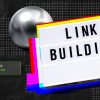
Dec 19, 2025
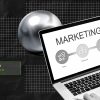
Dec 18, 2025

Dec 17, 2025

Dec 15, 2025

Dec 15, 2025

Dec 15, 2025
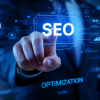
Dec 13, 2025

Dec 12, 2025
Sorry, but nothing matched your search "". Please try again with some different keywords.

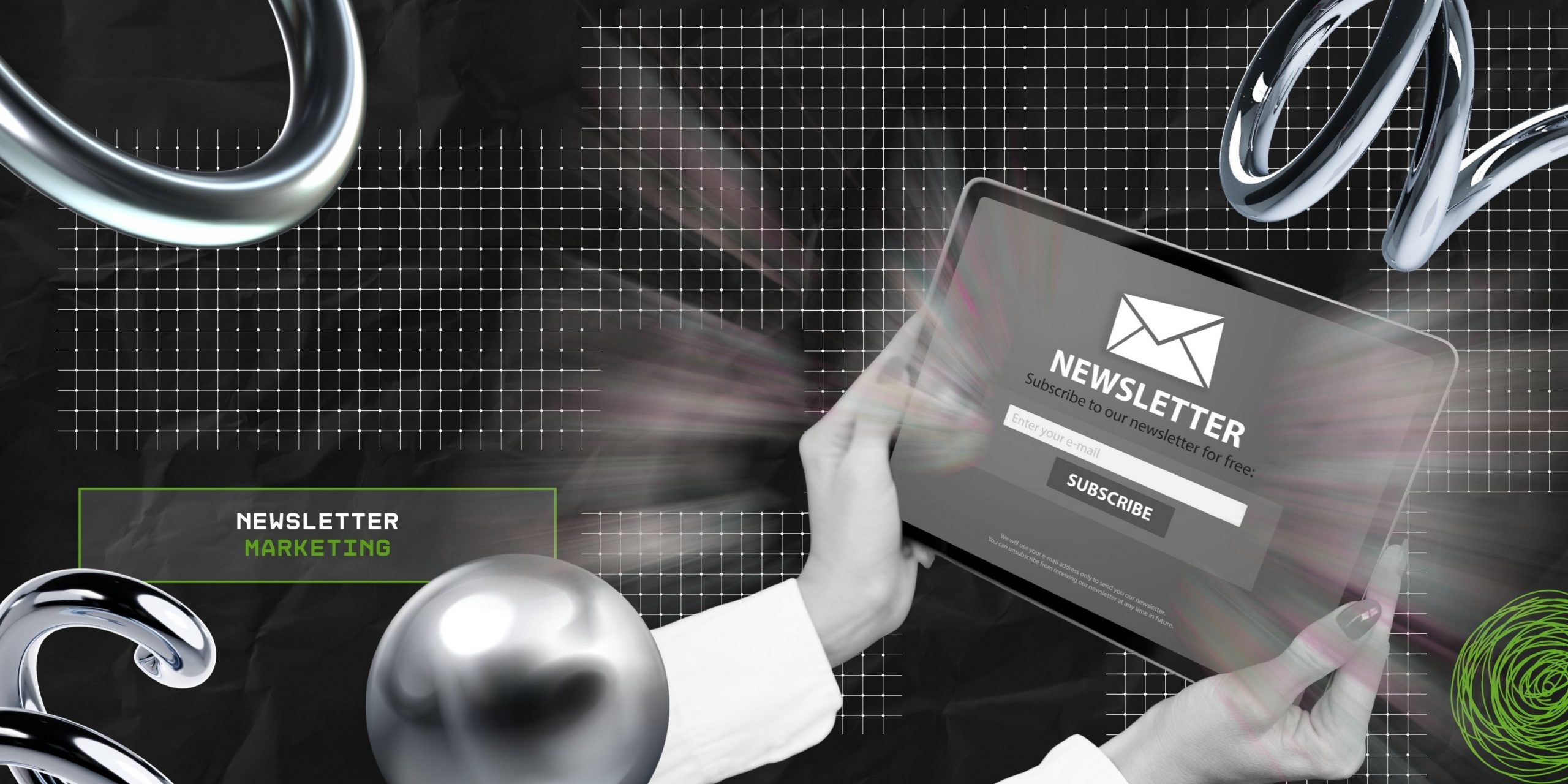
With diverse brand content available online, it is hard to make an impactful image on consumers. This makes most brands struggle to attract and engage potential customers.
Moreover, when there is a lack of customer engagement, brands can witness a massive loss of revenue and a higher churn rate.
That’s where newsletter marketing comes into play.
Unlike traditional email marketing, which focuses on boosting conversion rates, newsletters help brands achieve their long-term success.
That is, they can effectively engage potential customers, spread awareness, and nurture loyal customers. So, naturally, it provides a win-win solution.
But the real question is— “How to create engaging brand newsletters?”
Well, that’s what I am going to talk about today. In this blog, I am going to explore the diverse aspects of newsletter marketing by focusing on—
Stay tuned!

First things first, newsletters and normal emails are not the same. That is, they have a striking difference. So, it is better to know their differences.
To explain in simple terms, the newsletter refers to the scheduled emails that provide valuable brand content to the loyal customers. So, subscribers get useful information about product launches, events, and special discounts through the newsletters.
Moreover, newsletters are focused on driving conversion rates, engaging customers, and attracting a new audience.
So, they tend to touch upon the interests of the targeted group to drive maximum interactions. This helps the brand to retain loyal customers and expand its brand awareness.
Unlike other marketing strategies, Newsletters provide a cost-efficient, direct customer communication and sales-driven approach. So, some of its benefits include—
According to the report from the Digital Marketing Institute—
“71% of B2B marketers use an email newsletter as part of their content marketing strategy, and 37% say it’s one of their most effective marketing channels.”
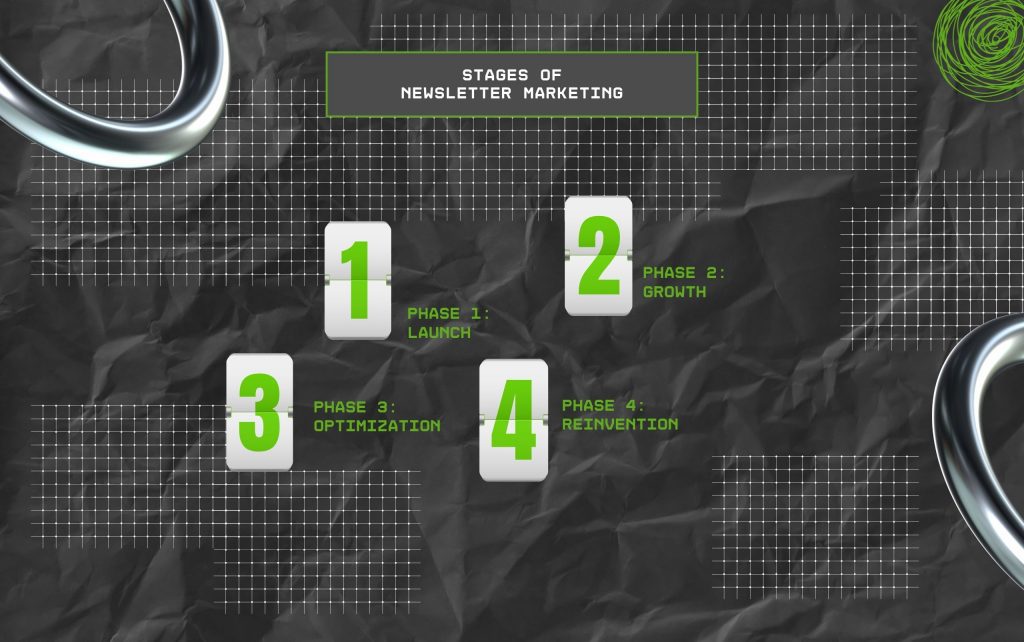
Generally, the newsletter marketing moves through four basic stages – launch, growth, optimization, and reinvention. So, here is the detailed exploration of each stage.
Firstly, the main objective of the launch phase is to identify the target audience and create compelling emails to engage them.
Moreover, in this phase, the emails include call-to-action messages and welcome notes from the brand. So, it clearly reaches their target audience.
In this growth phase, brands use scheduling emails to consistently send them to their subscribers. So, they can expand their audience reach with valuable brand content.
After the growth phase, the brands aim to optimize eth effectiveness of the newsletter marketing strategy.
So, they optimize the emails, automate the campaigns, and analyze the key performance metrics.
Finally, in the Reinvention phase, the goal shifts from attracting new customers to reengaging the loyal ones.
So, in this phase, the emails are personalized with a proper call-to-action message — feedback, reviews, or even special offer messages.

Now, if you are looking for the perfect step-by-step process to create an engaging newsletter, here is the guide.
Firstly, brands need to define the goal of the marketing and identify the target audience. So, based on whether the newsletter aims to find new customers, nurture loyal leads, or build brand authority, the content of the newsletter will be developed.
After defining the main objective of the newsletter marketing, the right type of newsletter should be chosen. So, select the specific newsletter type that helps brands to meet their objective effectively.
Once the format and type of newsletter are selected, the next step is to create valuable content. So, create highly researched content with exclusive resources and a clickable subject line.
Finally, include a proper CTA message to ensure that the subscribers can easily follow through with it. So, they can take the next step towards further engagement after reading the content.
After the entire newsletter is created, use the scheduling tool to send it to the subscribers. Moreover, stick to a consistent schedule to send newsletters either weekly or monthly.
In addition to this, make sure that the time between two emails is not too long. This can break engagement and affect the success of the marketing approach.
According to the report from the Digital Marketing Institute on newsletter marketing—
“There’s no point in putting in time and resources into creating a newsletter if you don’t know how it’s performing. That’s why it’s important to set goals from the outset and tie key performance indicators (KPIs) or metrics to those goals”.
Having a proper newsletter marketing strategy is not enough. Assessing its effectiveness is the key to building a successful approach.
So, here’s how you can measure the effectiveness of the newsletter marketing—
Now, with this simple guide, anyone can start newsletter marketing to spread brand awareness and engage their audience.
So, what’s stopping you? Go ahead and make an engaging newsletter to re-engage your loyal subscribers and skyrocket your online visibility.
Here are some of the common questions around newsletter marketing for brand success.
AI technology can massively help in improving newsletter marketing. That is, by using the AI tools, users can fetch creative ideas, personalize emails, segment dynamic sections, and generate engaging subject lines. So, this makes sure that the receivers engage with the newsletter and become a loyal brand follower.
Gmail and Outlook often mark suspicious newsletters as spam. So, to avoid being flagged as spam in the folder, users need to ensure that the email is sent through authorized servers, has a digital signature, and enforces anti-spam practices. This way, they can avoid sending spammy or suspicious-looking newsletters to customers.
If you want to ensure that the newsletter reaches the customer’s inbox and is not flagged as spam, you need to follow the batch sending technique. That is, first send small batches of emails to diverse customers. Slowly, increase the sending frequency over the next 2-3 weeks. This way, you can avoid being flagged as spam by Gmail or Outlook.
Automating newsletter sending can help in reducing the manual burden and risks of human error. So, here is how to automate the communication—
Firstly, send resources and welcome emails to encourage the receivers to engage.
Then, follow up the email with a product link or discount coupons.
Finally, to re-engage the subscribers, send special and personalized emails.
Chandrima is a seasoned digital marketing professional who works with multiple brands and agencies to create compelling web content for boosting digital presence. With 3 years of experience in SEO, content marketing, and ROI-driven content, she brings effective strategies to life. Outside blogging, you can find her scrolling Instagram, obsessing over Google's algorithm changes, and keeping up with current content trends.
View all Posts
White Label Link Building: How Does It Work ...
Dec 19, 2025
Marketing Fundamentals: How To Build Your Fir...
Dec 18, 2025
AI SEO: Why It Matters & How To Rank O...
Dec 17, 2025
Best QA Testing Tools For Agile Development T...
Dec 15, 2025
NewzNav.com 2014623980: Is This News Site Wor...
Dec 15, 2025

